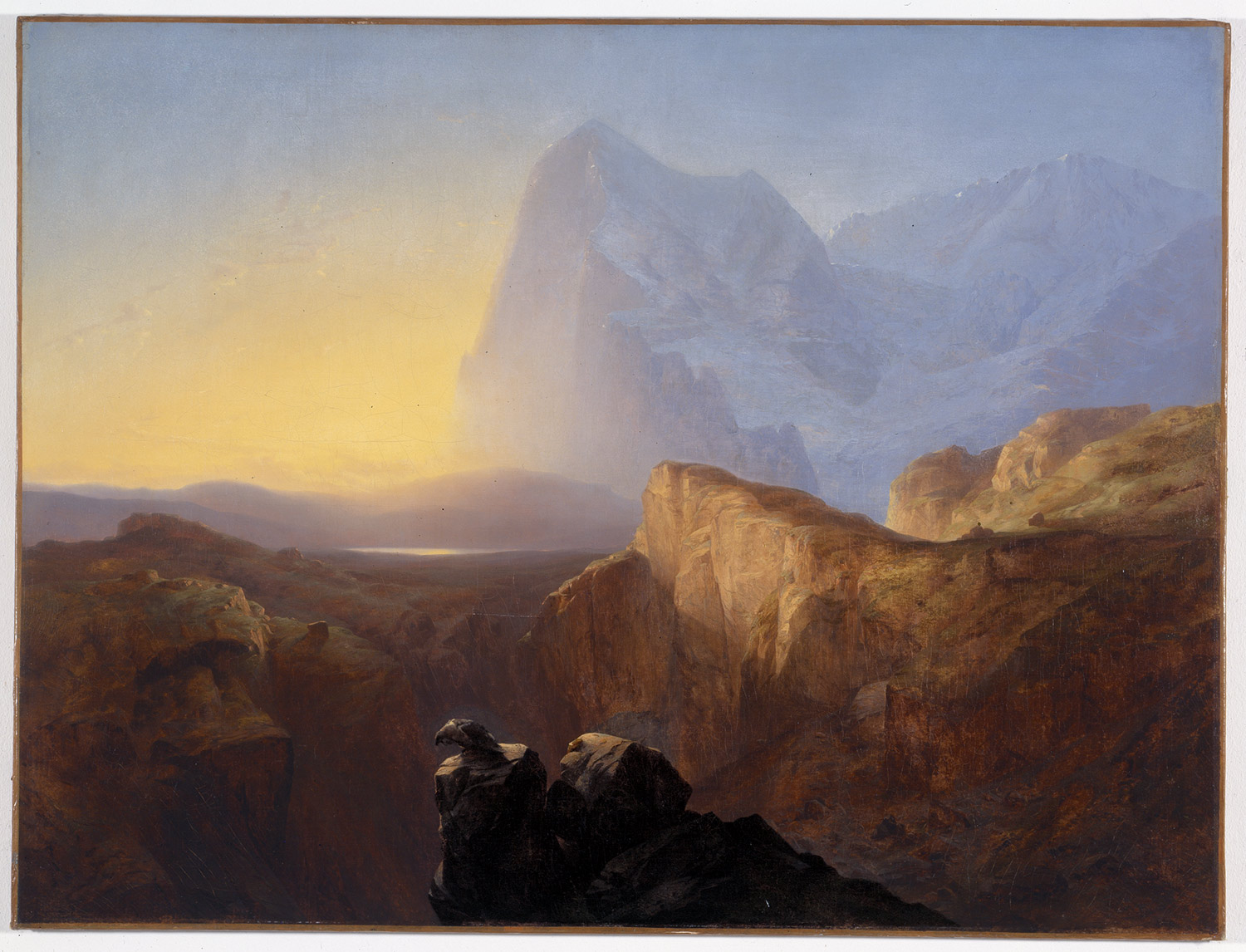Alexandre Calame was born in Vevey in 1810 and grew up in Geneva in impoverished circumstances. His first job was in banking, but he spent his leisure time sketching the landscape. A banker, who became aware of his talent, paid for him to study under François Diday, a painter of Alpine scenes, who, even though he was only slightly older than Calame, was then well-known. It did not take long before Calame’s fame outdid that of his teacher. He was celebrated as an artist throughout Europe, and his works sold well. In 1835, he traveled around the Bernese Oberland for the first time, and he frequently returned during the summer months over the following years. He produced sketches of nature, which he then reworked as oil paintings in his studio in Geneva. Today’s painting depicts a mountainous landscape in the High Alps. The vantage point chosen by the artist lies just above the tree line between the Alpine meadow, known as the Wengernalp, and the Kleine Scheidegg pass. The Eiger’s summit can be seen right in the center of the picture. The dark ravine in the foreground and the contre-jour lighting effect of the rising sun lends the mountain a sublime and inaccessible appearance. The lighter coloration of the background emphasizes the sense of depth. A vulture sits on a rocky outcrop like a watchman. In contrast to other pictures by Calame of lower lying mountains, which often depict waterfalls, dark clouds, and weather-beaten pine trees, this view is calm and peaceful: not dramatic in intent. The image is based on a drawing in pen and ink in one of the artist’s sketchbooks. For Calame, however, it was not about creating an exact representation of reality. For this reason, the fall of light is barely visible in the sketch and the rocks in the foreground have a different shape. Calame also executed a small-format oil painting, in which the Eiger is viewed from the small mountain lake, shown in the middle ground of our painting. This smaller picture also makes reference to a similar image by the Neuenburg landscape painter Maximilien de Meuron, a work that was known to Calame. That image was considered to be the first Swiss depiction of a landscape in the High Alps. Alexandre Calame’s painting follows in the tradition of Romanticism, which represents nature with pathos as an overpowering force. This picture was acquired in 1921 from private ownership by the Gottfried Keller Foundation. Prior to being given as a permanent loan to the Kunstmuseum Bern in 2003, it hung in the Swiss embassies in Paris and Helsinki, and then in the Federal Council Chamber at the Federal Parliament building in Bern.




The Grand Eiger
oil on canvas • -
 Alexandre Calame
Alexandre Calame